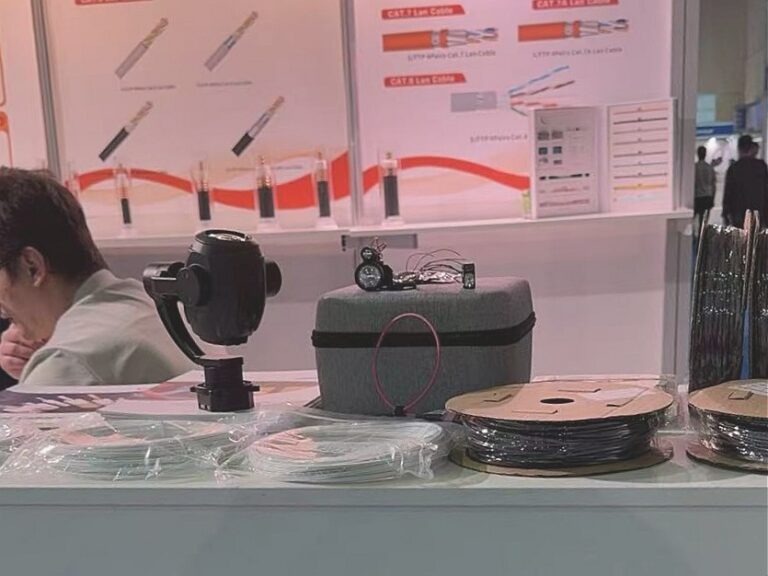In industries where precision is non-negotiable—from autonomous robotics to advanced surveying—905nm laser modules are revolutionizing distance measurement. At Sunflaser, our cutting-edge laser solutions, including the SF-DYA2502B, SF-DYA1503C, and SF-DYA1201A, deliver ±0.1m accuracy in optimized conditions, setting new benchmarks for reliability, safety, and integration. Let’s explore how these modules are reshaping precision ranging across industries.
Why 905nm Lasers? The Science Behind the Precision
The 905nm wavelength sits in the near-infrared spectrum, balancing eye safety, power efficiency, and environmental adaptability. Unlike visible lasers or longer wavelengths (e.g., 1550nm), 905nm modules excel in fog, dust, and varying light conditions while complying with IEC 60825-1 safety standards.
Key Innovations Driving ±0.1m Accuracy
- Time-of-Flight (ToF) Technology:
Our proprietary algorithms measure the time it takes for laser pulses to reflect off targets. For example, the SF-DYA2502B achieves ±1m accuracy at 2500m by resolving timing discrepancies down to nanoseconds. - Advanced Signal Processing:
Noise-cancelling algorithms in the SF-DYA1201A filter out ambient interference, ensuring clean data even in cluttered environments. - Thermal Stability:
Modules like the SF-DYA2501A operate flawlessly from -40°C to +60°C, thanks to adaptive thermal management—critical for outdoor applications like construction or drone navigation.
Real-World Applications: Where ±0.1m Makes All the Difference
1. Autonomous Vehicles & Robotics
- Use Case: A warehouse AGV (Automated Guided Vehicle) equipped with the SF-DYA1503C ( 25.8mm×24.6mm×12.8mm) navigates narrow aisles with ±1m accuracy, avoiding collisions and optimizing routes.
- Why It Works: Compact size, low power draw (standby: ≤1W), and shock-resistant design.
2. Surveying & Construction
- Use Case: Surveyors using the SF-DYA2501A map terrain with ±2m accuracy at 2500m, even in dusty or humid conditions.
- Key Feature: A ≤15m blind zone ensures reliable readings for mid-to-long-range targets.
3. Consumer Electronics & Sports
- Use Case: Golfers rely on handheld rangefinders powered by the SF-DYA1201A, achieving ±0.25% accuracy (e.g., ±2.5m at 1000m).
- Advantage: Ultra-lightweight (≤20g) and rapid measurement cycles (1Hz/2Hz modes).
Sunflaser vs. Competitors: Why Our Modules Stand Out
| Feature | Sunflaser SF-DYA2502B | Typical Market Alternatives |
|---|---|---|
| Accuracy | ±1m (up to 3000m) | ±2m–±5m |
| Operating Temperature | -40°C to +60°C | -20°C to +50°C |
| Power Efficiency | ≤2W @ 5V, 1Hz | ≤3W |
| Weight | ≤45g | 60–100g |
Technical Breakdown: Inside Sunflaser’s 905nm Modules
1. Compact Design, Maximum Performance
- SF-DYA1503C: At just 25.8mm×24.6mm×12.8mm, this module fits into drones, AR headsets, or IoT devices without sacrificing range (≥1500m).
- SF-DYA1201A: Weighing ≤20g, it’s ideal for portable gadgets, with standby power as low as 0.6W.
2. Precision Engineering
- Beam Divergence: ≤1.5mrad (SF-DYA2502B) ensures minimal scatter over long distances.
- Blind Zone Optimization: The SF-DYA1201A’s ≤10m blind zone avoids false readings for close-range targets.
3. Rugged Reliability
- IP Rating: Dust/water-resistant housings protect against harsh environments.
- MIL-STD-810G Compliance: Survives drops, vibrations, and extreme temperatures.
Overcoming Challenges: What You Need to Know
Environmental Limitations
While 905nm modules outperform visible lasers in fog or dust, heavy rain or dense smoke can reduce range. For example, the SF-DYA2502B’s 2500m range may drop to 1500m in thick fog.
Target Reflectivity Matters
Dark, matte surfaces absorb laser pulses, while reflective materials (e.g., traffic signs) enhance performance. Our SF-DYA1501A includes adaptive algorithms to compensate for varying reflectivity.
The Future of Laser Ranging: Trends to Watch
1. AI-Powered Analytics
Future modules will integrate machine learning to distinguish between objects (e.g., a pedestrian vs. a tree) and predict movement patterns.
2. Miniaturization
Next-gen designs, like the SF-DYA1503C, aim to shrink modules further while boosting pulse rates (up to 5Hz) for real-time applications.
3. Energy Efficiency
Solar-compatible modules and ultra-low-power modes (e.g., 0.4W standby in SF-DYA1501A) will drive sustainability in IoT and wearables.
Why Choose Sunflaser?
- ISO-Certified Manufacturing: Rigorous testing ensures compliance with global standards.
- Custom Solutions: Tailor beam divergence, interfaces (TTL/UART), or mounting options for your project.
- Global Support: From prototyping to mass production, we provide end-to-end technical guidance.
Conclusion: Precision Meets Innovation
The era of sub-meter laser ranging is here. With Sunflaser’s 905nm modules, industries gain a cost-effective, reliable tool for applications where accuracy is non-negotiable—whether guiding autonomous robots, mapping construction sites, or enhancing consumer tech.
Ready to Elevate Your Project?
Explore our full range of laser solutions at Sunflaser’s Official Website or contact our team for a personalized consultation.
FAQs
Q1: How does 905nm compare to 1550nm lasers?
A1: 905nm modules are more cost-effective and eye-safe for short-to-mid ranges, while 1550nm suits long-range LiDAR but requires higher power.
Q2: Can I integrate Sunflaser modules into existing systems?
A2: Yes! Our TTL/UART interfaces and customizable firmware simplify integration with drones, robots, or IoT devices.
Q3: What’s the lifespan of these modules?
A3: With proper use, Sunflaser modules last 50,000+ hours—backed by a 1-year warranty and lifetime support.
Q4: Do you offer custom calibration?
A4: Absolutely. We optimize modules for specific environments, targets, or accuracy requirements.
Note: Specifications vary based on environmental conditions. Contact us for detailed performance data tailored to your use case.

